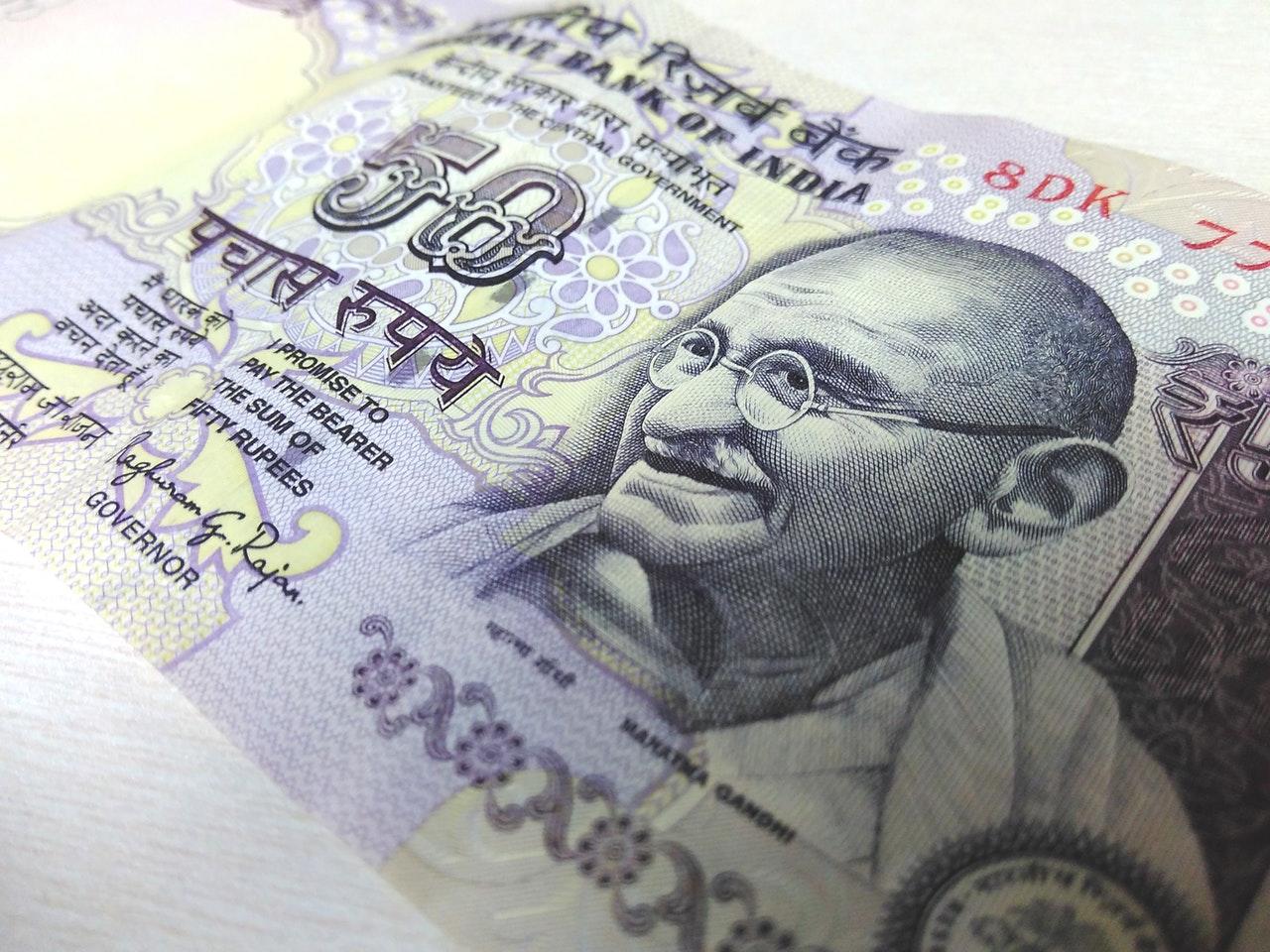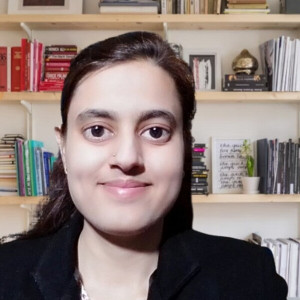Forming correct Hindi structures can feel overwhelming for English speakers, especially because the word order, grammar rules, and patterns differ greatly from English. But don’t worry—this guide will break everything down into simple steps.
In this article, you’ll first learn a bit about the origin and uniqueness of Hindi, and then we’ll dive into how phrases are formed, what they consist of, and the key components like nouns, verbs, tenses, and gender agreements. We’ll also explore different forms of expression—statements, questions, and commands—with real-life examples, and finally, give you access to practice worksheets to reinforce what you’ve learned.
By the end of this guide, you’ll not only understand the building blocks of Hindi but also be able to create and recognise common sentence patterns confidently. Whether you’re a complete beginner or brushing up on your skills, this article will make building Hindi sentences easier and more approachable.

The Story Behind Simple Hindi Sentences: From Sanskrit to Modern Hindi
Before we start forming simple Hindi sentences, it’s useful to know where Hindi comes from—because the language’s history explains why sentences are structured the way they are today.
Hindi belongs to the Indo-Aryan branch of the Indo-European family, the same family that gave us languages like English, Spanish, and Persian. Its earliest roots trace back to Sanskrit, the classical language of ancient India. Over centuries, Sanskrit evolved into Prakrits (spoken forms), then Apabhraṃśa, and later Hindustani, which carried influences from Persian and Arabic during the Mughal period.
Sanskrit → Prakrit → Apabhraṃśa → Hindustani → Modern Standard Hindi
While the former wrote Hindustani using the Devanagari script (related to the native Sanskrit), the latter used the imported Persian alphabet. The divide in the common language appeared in the mid-19th century, when one alphabet, the Persian one, was made official over the Devanagari script. Of course, Hindus were not pleased by this decision and it took more than a century for Hindi in the Devanagari script to be recognised as the official standard form of Hindi.
While the divide is still the object of much controversy in the country, the good news is that both spoken version of the language remain so closely related that Hindi and Urdu speakers can understand each other.
Modern Standard Hindi, the form you’ll learn here, is based on the Khariboli dialect and uses the Devanagari script. While Hindi has borrowed words from Persian and Urdu, its core sentence structure—Subject–Object–Verb (SOV)—remains stable and deeply influenced by Sanskrit grammar rules like gender and verb agreement.

Hindi Sentence Structure: How Grammar Shapes Your Sentences
When learning a new language, sentence structure often feels like the toughest puzzle—and Hindi is no different. If you’ve ever tried forming a Hindi sentence, you may have noticed that the words don’t line up the same way they do in English. This is where understanding the building blocks of Hindi grammar becomes essential.
In this section, we’ll break down what goes inside a Hindi sentence and how its structure is shaped by verbs, tenses, and conjugation rules. Think of this as your step-by-step lesson that simplifies complex ideas into easy, digestible parts. You’ll learn why verbs change their endings, how gender and number affect word choices, and how everything works together to form clear, correct sentences.

For learners in Singapore who are juggling multiple languages—English, Mandarin, Malay—adding Hindi might feel like a big challenge. But this guide is here to help you. Each part of the sentence structure is explained with simple phrases and examples so you can see how the rules apply in real life.
The best part? We’ll keep it practical, with short examples you can try on your own. By the end, you’ll not only understand the theory but also feel confident enough to create your own sentences—free of confusion.
Next, we’ll look at four core elements that shape Hindi sentences: verbs, tenses, conjugation, and a quick note on gender and nouns.
Hindi Verbs
Verbs are action or being words that tell us what someone does, feels, or is; in Hindi they change (their forms) to match who is doing the action (Informal tum / tu, Formal respectful Aap), whether it’s happening now, happened before, or will happen later, and sometimes the gender of the person acting (this is different from English and from many everyday Singapore languages like English, Malay, or Singlish where verbs mostly stay the same); think of a busy Singapore hawker centre at lunch: your friend from India says “Main kha raha hoon” (I am eating) while you point to teh tarik and Say “Main pee rahi hoon” (I am drinking), and when you call your Hindi-speaking teacher politely you switch to Aap kha rahe Hain? to ask “Are you eating?”—that little Hain shows respect (Formal) and also matches plural/polite forms; if you chat Informal with a classmate you may drop to Tum kha rahe ho, a bit Like how Singaporeans switch from “Would you like to eat?” to “Makan or not?” depending on the situation; many common verbs end in -na in their dictionary (base) form—khana (to eat), peena (to drink), jana (to go), aana (to come), bolna (to speak/say)—and you change the ending to fit the sentence; for a bigger list see a guide to common Hindi verbs.
Remember verbs by linking them to daily routines—stick notes on things (“food = khana,” “water = peena”), group them by sounds, and practice Formal vs Informal pairs aloud.
Tenses in Hindi
Understanding tenses is a basic step when learning any language, including Hindi. In Singapore, where languages like English, Malay, and Mandarin mix daily, you can relate easily. For example, in Malay, you might say: Saya makan nasi (I eat rice), which in English is “I eat rice.” In Hindi, the same present tense sentence becomes “Main chawal khata hoon” (for males) or “Main chawal khati hoon” (for females). Similarly, for the past tense, Malay Saya sudah makan (I have eaten) becomes “I ate rice” in English, and in Hindi “Mainne chawal khaya”. Learning these small changes will help you form correct Hindi sentences easily. If you want a free resource for more examples and practice, check out our complete guide to Hindi tenses, which includes word lists and tips for learners.
Hindi Conjugation
At a basic level, conjugation simply means changing a verb form so it matches who is doing the action, when it happens (tense), and—very important in Hindi—gender and sometimes politeness. This is different from Malay, where the verb often stays the same. For example, Malay Saya pergi sekolah stays pergi whether you’re male or female; in Hindi, you say “Main school jaata hoon” if you’re male and “Main school jaati hoon” if you’re female. Malay Saya makan nasi (I eat rice) becomes “Main chawal khata hoon/khati hoon.” In the past, Malay Saya sudah makan (I ate rice) maps to Hindi “Mainne chawal khaya/khayi.” Notice how the Hindi verb ending (‑ta/‑ti, ‑ya/‑yi) shifts with gender. Plural and formality also matter: “Hum school jaate hain” (we go to school), “Aap school jaate hain” (you go to school, polite). Once you spot these patterns, Hindi verbs stop feeling mysterious and start feeling logical. Ready to practice with guided drills, printable charts, and learner-friendly examples? Click Find Lessons to Master Conjugation and start building confident Hindi sentences today!
Gender & Number Agreement in Simple Hindi Sentences
Hindi sentences shift shape depending on gender (masculine/feminine) and number (singular/plural), something English speakers often overlook because English marks these only in a few pronouns, while Malay and Mandarin usually don’t change word endings this way. That’s why paying attention to agreement is key when forming clear, natural Hindi, especially when you’re building from simple patterns about time, day, greetings like hello, and everyday objects.
1) What is the noun’s gender?
2) Is it singular or plural?
3) Do adjectives and verbs match?
These checks help you avoid common mistakes, such as using masculine endings with feminine words or forgetting plural agreement.
In Hindi, these small changes can completely shift meaning, so practising them early is essential. For a fuller walk-through—covering gender lists, plural patterns, tense links, and printable worksheets—see how to navigate Hindi grammar. This resource includes examples, visual charts, and exercises to make learning systematic and stress-free. If you’re new to gender rules, start with common nouns like kitab (book) and din (day), then progress to real-life phrases about time, greetings, and daily activities. The more you practice with familiar scenarios, the quicker you’ll recognise patterns. Bookmark the guide, keep it handy, and revisit it whenever you form new sentences.

Sentence Structure In English
In English, a simple sentence is composed of three things: a subject, a verb and an object, commonly in this precise order.
" My name is John."
There a three more types of sentences in the English language:
- Compound sentences, which contains two independent strings joined by a coordinating conjunction or a punctuation sign.
"My name is John and I am from London"
- Complex sentences, which contain one independent string and one subordinate string, meaning that the subject and verb contained in the subordinate string only makes sense in relation to the independent string.
" I speak English because I am from London."
- Compound-complex sentences, which contains at least two independent string and one subordinate string.
"My name is John and I speak English because I am from London"
Now let's have a look at the structure of Hindi sentences.

Hindi Sentence Examples and How They Are Constructed
Although Hindi and English often express similar ideas, their word order is different. In English, you usually say Subject–Verb–Object, such as “I eat rice.” Hindi, on the other hand, uses Subject–Object–Verb. A literal translation of “I eat rice” would sound like “I rice eat,” which in Hindi is written as main chawal khata hoon (or main chawal khati hoon if the speaker is female). This is an important keyword when learning Hindi: the verb typically comes at the end.
Understanding this difference will make it easier for you to follow sentence structures. When you see Hindi Sentence Examples, do not worry if they seem reversed compared to English. It is simply the way Hindi organizes meaning. Whether you are forming positive sentences like “I eat food” (main khaana khata hoon), negative ones like “I do not eat food” (main khaana nahin khata hoon), or explanatory sentences that give a reason, the main rule stays the same—keep the verb at the end.
Another point to note is that in the Devanagari script, names such as John or Delhi do not use uppercase letters because Hindi does not have separate capital and small letters. Focus on learning the word order and patterns; this is the foundation for clear and confident sentence building in Hindi.
" My name is John = Mera (my) naam (name) jon hai (is) =
मेरा नाम जॉन है"
"My name is John and I am from London =
Mera (my) naam (name) jon hai (is) aur (and) main (I) Landan (London) se (from) hoon (am) =
मेरा नाम जॉन है और मैं लंदन से हूँ"
" I speak English because I am from London =
Main (I) angrejee (English) bolata (speak) hoon (am) kyonki (because) main(I) Landan (London) se (from) hoon (am) =
मैं अंग्रेज़ी बोलता हूँ क्योंकि मैं लंदन से हूँ"
"My name is John and I speak English because I am from London =
Mera (my) naam (name) jon hai (is) aur Main (I) angrejee (English) bolata (speak) hoon (am) kyonki (because) (I) Landan (London) se (from) hoon (am) =
मेरा नाम जॉन है और मैं अंग्रेज़ी बोलता हूँ क्योंकि मैं लंदन से हूँ"
"
The Different Type of Hindi Sentences
We just saw that there is four grammatical type of sentences in Hindi. Yet, those four types of sentences can be used to write six different grammatical forms also called moods.
In Hindi, these six different grammatical forms are:
- Affirmative
- Negative
- Imperative
- Interrogative
- Exclamatory
- Hypothetical
- Wishful
- Indicative
For all the examples we will use simple sentences except for the indicative form.
The Affirmative Form
This type of sentence is used to express something that is true. In the example below, you will also notice the use of the "?" at the end of the sentence. It is called "poorn viraam" in Hindi which simply means "full stop".
"John is here = jon yahaan (here) hai"
The Negative Form
This is the opposite of the affirmative form and is used to express something that is not true.
"John is not here = jon yahaan nahin (not) hai"
The Imperative Form
This form is used to express an order, a command, a request or to advise someone to do something (or not). It is common for warning signs to be written in the imperative form.
"You should do your homework now. =
Aapako (you) ab (now) apana (your) kaam (work) karana (do) chaahie (should)."
"Danger! Do not touch. = Khatara! chhuo mat."
In this last example, you will notice that we used an exclamation mark (!). In Hindi, it is common to use Latin punctuation such as the colon, semi-colon, dash or question mark. Note that the Hindi language use of these punctuation signs is the same than the one in the Latin alphabet.

The Interrogative Form
This form is used to formulate a question.
"Where is John? = jon kahaan hai?
"Where are you going? = Tum (you) kahaan (where) ja (go) rahe ho (going)?"
Unlike English, Hindi does not reverse the subject and the verb for the interrogative form. The question mark at the end of the sentence is the only indication that the phrase is a question.
The Exclamatory Form
This type of sentence is the same as an affirmative or negative one, but the exclamatory form is used to express surprise, emotion or excitement. These type of Hindi phrases will be punctuated with an exclamation mark just like in English.
"I love you! = Main tumase pyaar (love) karata (do) hoon (are)!
The Hypothetical Form
This form expresses a speculation or a conditional fact. In English this is usually done by using the conjunction "if" or the verbs may or might.
"If you do your work, then we will go to Bombay =
Yadi (if) aap (you) apana (your) kaam (work) karate (do) hain (are), to (then) ham (we) bombe (Bombay) jaenge (will go)"
Real-Life Hindi to English Translation Sentences You’ll Actually Use
Learning a new language becomes easier when you focus on practical phrases that you can use in everyday conversations. For those living in Singapore or interacting with Hindi speakers, knowing some commonly used Hindi sentences can be extremely helpful. To make learning simpler, the table below provides 20 real-life English sentences along with their Hindi translations (including pronunciation) and equivalent phrases in Mandarin and Malay. These sentences cover common situations such as greetings, asking for help, and basic interactions.
| Serial No. | English | Hindi (with Pronunciation) | Mandarin | Malay |
|---|---|---|---|---|
| 1 | Hello | नमस्ते (Namaste) | 你好 (Nǐ hǎo) | Halo |
| 2 | How are you? | आप कैसे हैं? (Aap kaise hain?) | 你好吗? (Nǐ hǎo ma?) | Apa khabar? |
| 3 | I am fine | मैं ठीक हूँ (Main theek hoon) | 我很好 (Wǒ hěn hǎo) | Saya sihat |
| 4 | Thank you | धन्यवाद (Dhanyavaad) | 谢谢 (Xièxiè) | Terima kasih |
| 5 | Sorry | माफ़ कीजिए (Maaf kijiye) | 对不起 (Duìbuqǐ) | Maaf |
| 6 | Please | कृपया (Kripya) | 请 (Qǐng) | Tolong |
| 7 | What is your name? | आपका नाम क्या है? (Aapka naam kya hai?) | 你叫什么名字? (Nǐ jiào shénme míngzì?) | Siapa nama anda? |
| 8 | My name is John | मेरा नाम जॉन है (Mera naam John hai) | 我叫约翰 (Wǒ jiào Yuēhàn) | Nama saya John |
| 9 | Where are you from? | आप कहाँ से हैं? (Aap kahaan se hain?) | 你来自哪里? (Nǐ láizì nǎlǐ?) | Anda dari mana? |
| 10 | I am from Singapore | मैं सिंगापुर से हूँ (Main Singapore se hoon) | 我来自新加坡 (Wǒ láizì Xīnjiāpō) | Saya dari Singapura |
| 11 | How much is this? | यह कितना है? (Yeh kitna hai?) | 这个多少钱? (Zhège duōshǎo qián?) | Berapa harganya? |
| 12 | I need water | मुझे पानी चाहिए (Mujhe paani chahiye) | 我要水 (Wǒ yào shuǐ) | Saya mahu air |
| 13 | I am hungry | मुझे भूख लगी है (Mujhe bhook lagi hai) | 我饿了 (Wǒ è le) | Saya lapar |
| 14 | Where is the toilet? | शौचालय कहाँ है? (Shauchalay kahaan hai?) | 厕所在哪里? (Cèsuǒ zài nǎlǐ?) | Di mana tandas? |
| 15 | Can you help me? | क्या आप मेरी मदद कर सकते हैं? (Kya aap meri madad kar sakte hain?) | 你能帮我吗? (Nǐ néng bāng wǒ ma?) | Boleh tolong saya? |
| 16 | Yes | हाँ (Haan) | 是 (Shì) | Ya |
| 17 | No | नहीं (Nahin) | 不 (Bù) | Tidak |
| 18 | I don’t understand | मुझे समझ नहीं आया (Mujhe samajh nahi aaya) | 我不明白 (Wǒ bù míngbái) | Saya tidak faham |
| 19 | Goodbye | अलविदा (Alvida) | 再见 (Zàijiàn) | Selamat tinggal |
| 20 | See you soon | जल्दी मिलेंगे (Jaldi milenge) | 回头见 (Huítóu jiàn) | Jumpa lagi |
Learning a new language can seem challenging at first, but with the right guidance and consistent practice, it becomes an enjoyable and rewarding experience. In this article, we explored everything you need to know as a beginner—from understanding sentence structures and grammar basics to learning about verbs, gender, numbers, tenses, and conjugation. We also provided practical, everyday phrases to help you start speaking confidently in real-life situations.
However, the best way to master any language is through personalised learning, and that’s where Superprof makes all the difference. The platform connects students with expert tutors from around the world, offering tailored lessons that suit your pace and learning style. Whether you prefer one-on-one sessions, group classes, or flexible online lessons, Superprof provides the tools and resources to make your learning journey smooth and effective.
So why wait? Head over to Superprof, find the perfect tutor for you, and start building your fluency today. With the right support, you’ll be speaking with confidence in no time!














Nice grammar 👍
U r so hardworking
Great job.